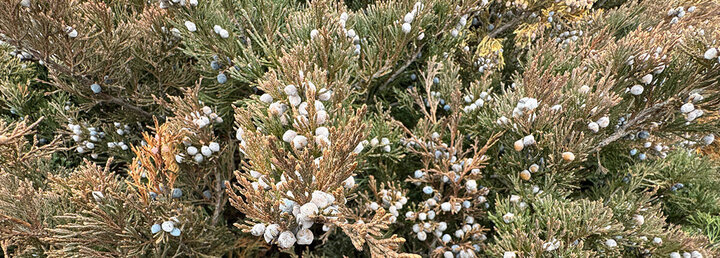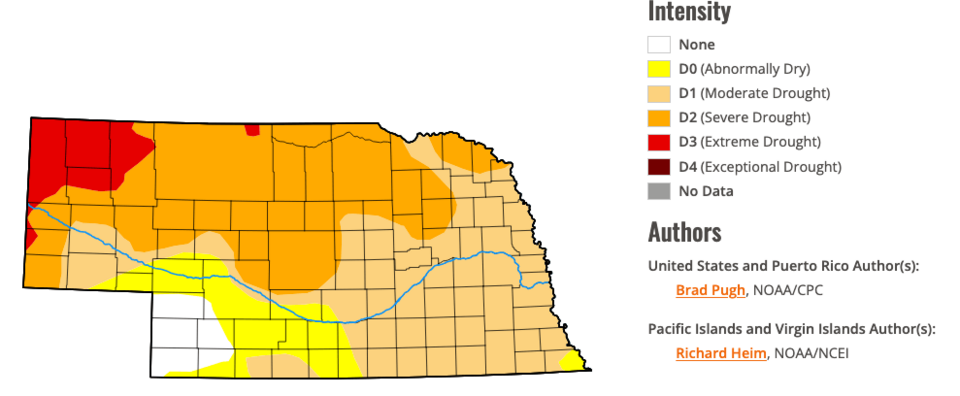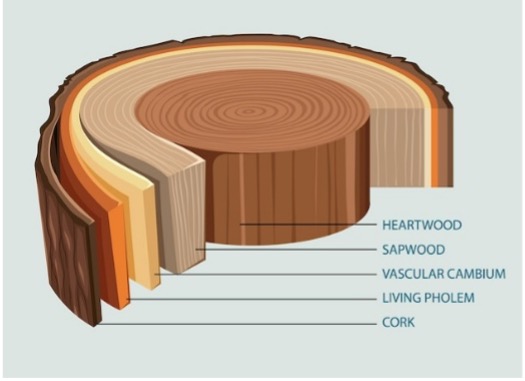
Seasonal information for Nebraska's green industry professionals.
Going In-depth
1. Trunk anatomy and trunk girdling damage - Understanding the impact of trunk damage.
2. Growing degree days & pest update - Based on growing degree day (GDD) markers, the pest control season is at an end. Watch for the return of GDD pest target timing in March 2025.
Research You Can Use
3. Garden Center 2024 State of the Industry Report - First ever digital-only State of the Industry Report, from Garden Center magazine. Scroll through and focus on the data that’s most important to you. This report is fully interactive, allowing the data to be as dynamic as the industry it reflects.
Greener Landscapes - Conservation & Climate Change Mitigation in Action
4. Best trees to replace ash trees - Species recommended to replace Nebraska ash trees, which will likely be killed by Emerald Ash Borer (EAB) in the coming years. For more tree lists and other plant information, visit plantnebraska.org. List compiled by Justin Evertson, Green Infrastructure Coordinator.
Timely Topics
5. Winter color on evergreens - May be darker green to purplish-brown.
6. Fungus gnats on indoor plants - Tiny dark-colored gnats commonly infest overly wet soil.
7. Prepare pest control spray plans for 2025 - Fruit and vegetable spray schedules for homeowners & commercial growers
For Your Information
9. Digital Diagnostic Network - Need help with diagnostics? - Submit pictures and questions for diagnosis by Nebraska Extension experts.
ProHort Update Newsletter
ProHort Update is a FREE monthly e-mail newsletter from Nebraska Extension, providing timely information to green industry professionals.
SubscribeNebraska's drought status, 12/25/24

1. Trunk anatomy and trunk girdling damage

Knowledge of trunk anatomy can help those who work with trees and tree owners have a better understanding of impacts of trunk damage. Tree trunks are readily girdled by wildlife gnawing, staking or tag wires and straps, improperly used trunk wraps, and damage from lawn mowers and weed trimmers, as well as girdling roots or repeated trunk injections.
Trunk Anatomy and Function
- Bark/Cork is the protective layer. It keeps out moisture and reduces water loss. It insulates against cold and heat and offers defense against injury such as from tree pests.
- Cambium is the growing part of the trunk that increases trunk diameter. It is a thin sheath of continually dividing cells producing phloem to the outside and xylem to the inside.
- Living phloem (also called inner bark and found between bark and cambium) is a thin layer. It moves photosynthates (carbohydrates and sugars produced through photosynthesis and the only source of food for plants) from leaves throughout the tree, such as into roots, for consumption and storage. It lives for a short time, then dies and becomes bark.
- Sapwood/Xylem that conducts water and nutrients (dissolved minerals from soil). It also provides mechanical support, storage of carbohydrate reserves, and defense against disease and decay. As new rings of sapwood are laid down, inner cells become heartwood.
- Heartwood has no living cells, does not conduct water, and is darker than sapwood. It contributes to mechanical support of the tree, can resist invasion by microorganisms but is considered quite susceptible to decay organisms, and stores carbon.
Girdling
Girdling is an injury that prevents transport of food from leaves into roots and other parts of the tree. With phloem being a thin layer just beneath bark, girdling readily causes stress. With decreased or eliminated food transport, tree function is reduced. Roots can die from lack of food and stop taking up water and nutrients leading to crown dieback.
The more extensive around the trunk girdling is, the more harmful to the tree. Damage that goes one-fourth of the way around a tree is unlikely to kill a tree but will cause harm and lead to other issues like tree stress and decay. If the damage extends one-half or greater around the trunk, the chances of tree death increases. Since roots can survive on stored food in the roots and lower trunk for a while, there is a delayed response and a tree may appear to survive girdling, but will eventually die back.
Bridge Grafting
If damage is not too extensive and a tree is healthy and not too large, a method called bridge grafting may provide a bridge for transport across the damaged area to partially restore food transport into roots. If it works, the tree may produce new tissue to close over the wound and resume normal plant processes. For information on bridge grafting, see: Bridge Grafting as a Life-saving Procedure for Trees.
Diagram is from FreePik
5. Winter color on evergreens
Some evergreens, both conifers and broadleaves, develop winter color. A plant changing color during winter may concern homeowners. Winter color is natural and not harmful. It develops in late fall and early winter and ranges from darker green to purplish-brown to bronze.
Eastern red cedar, Juniperus virginiana, ranges from bronze to yellow-brown in winter naturally.
In contrast, a Scotch pine infected with pine wilt turns a dull green or grayish-green first, then fairly rapidly turns completely brown. The entire tree is affected, not just a portion.
Browning caused by winter dessication typically shows up in late winter or spring, not during fall or early winter.
It is always important to positively identify the cause of plant concerns for homeowners. It may be something natural and not a serious disease issue at all. Information about expected winter color can also be shared with clients when they purchase plants.
6. Fungus gnats on indoor plants
Tiny gnats flying around houseplants, our faces or windows during winter are most likely fungus gnats. Adults lay 100 to 150 eggs on soil of houseplants and the larvae feed on fungus and organic matter in potting mixes or soil. They may also feed on plant roots. They are most often associated with overwatered or poorly drained soil; especially during winter when plants continue to receive the same amount of water as during summer, but they are not using as much water.
Fungus gnats do not bite or harm anything in the home. To eliminate a fungus gnat infestation, the life cycle must be broken. This can be done by removing the fungus in which they breed while simultaneously reducing the number of adults able to mate. The following things can be done to reduce the moisture in topsoil.
- Water less frequently and allow the soil to dry out more completely between waterings.
- Blow air over the soil with a fan.
- Change the planting medium to provide better drainage.
Yellow sticky cards can be purchased at garden stores to catch flying adult gnats. In addition, there are biological control products such as Bacillus thuringiensis that can be applied to the soil to control the larvae. Look for fungus gnats on the insecticide label and follow the directions.
Fungus Gnats, Nebraska Extension
7. Prepare pest control spray plans for 2025
Fruits & vegetables are susceptible to a number of disease and insect pests. Often, selection and planting of resistant cultivars will reduce the need for pesticides. When needed, timing of pesticide applications is critical to effectively controlling targeted pests. For recommended spray schedules see the following publication.
Homeowners:
- Fruit Spray Schedules for Homeowners, University of Missouri Extension
Commercial Growers:
- 2023-24 Midwest Fruit Pest Management Guide was developed by the Midwest Fruit Workers Group. This publication combines two longtime guides that have become familiar to countless growers: the annual Midwest Small Fruit and Grape Spray Guide and the annual Midwest Tree Fruit Spray Guide. Members of the Midwest Fruit Workers Group decided to combine these publications in order to address the needs of many producers who grow many different crops. It is our hope that this new combined publication will make it easier for producers to find the accurate information they need for managing pests in fruit crops. It is a joint publication of University of Arkansas, University of Illinois, Purdue Extension, Iowa State University, K-State Research and Extension, University of Kentucky, University of Minnesota, University of Missouri, Missouri State University, Nebraska Extension, Ohio State University, Oklahoma State University, West Virginia University and University of Wisconsin.
- 2024 Midwest Vegetable Production Guide for Commercial Growers - This annual guide is a summary of currently suggested vegetable varieties, seeding rates, fertilizer rates, weed control, insect control, and disease control measures for commercial growers.
9. Digital Diagnostic Network - Need help with diagnostics?
Do you or your clients have questions you need help answering? Maybe you are a lawn care person and they're asking about trees, shrubs, or flowers? While you can refer them to their local Extension office, another option is Digital Diagnostic Network. Homeowners, lawn care professionals, pest control operators and others are invited to submit questions and photos through this website or with the assistance from an Extension professional at any Nebraska Extension office. All offices are equipped with high-resolution digital image capturing technology. Whether the question is about a lawn weed, insects on a plant, diseases in a shrub border or other, an expert panel of Extension professionals will review and respond to the question. To get started, create an account so the question can be reviewed and responded to via email. For more information and to create an account, go to Digital Diagnostic Network.
Bugging Out With Your Camera Phone - Tips on how to get a good picture.
Reference to commercial products or trade names is made with the understanding that no discrimination is intended and no endorsement by Nebraska Extension is implied. Use of commercial and trade names does not imply approval or constitue endorsement by Nebraskas Extension. Nor does it imply discrimination against other similar products.
Continuing Issues
Fruits & Vegetables
Trees & Shrubs
- Emerald Ash Borer Resources - EAB has been found in several Nebraska locations. Homeowners are encouraged to wait to begin treating their ash trees until the insect is confirmed within 15 miles of their location.
- NFS Tree Storm Damage Resources